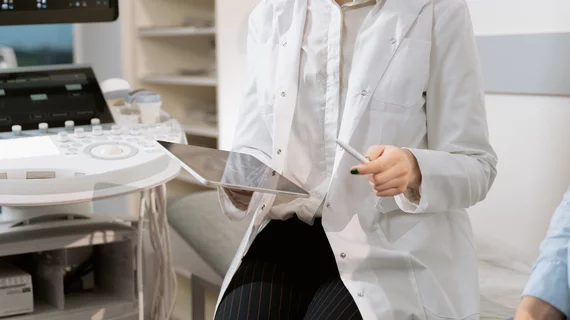IR proves strong on practicality, profitability—but some cost-inclusive metrics remain to be shown
Seven years after the Society of Interventional Radiology identified a need for actionable insights on cost-effectiveness, a new literature review shows IR investigators have indeed stepped up to conduct robust economics-centered research.
Much of the recent evidence confirms that IR produces good clinical outcomes while beating surgery on cost-effectiveness in numerous procedures.
However, IR researchers who answered the call—issued by a research-consensus SIR panel in 2016—left gaps to be studied from the present point forward.
Primary among these is the dearth of cost data on some particular service lines, including venous thromboembolism, biliary and endocrine therapies.
Other newly identified needs include standardizing study methodologies and getting a handle on the high costs of disposable supplies used in IR procedures.
The shortcomings led the literature review’s authors to conclude that future research “must contain robust methodology, with clear sources of cost data, and must go beyond single institution reporting to assess IR’s impact on the healthcare system as a whole, societally and potentially globally as IR becomes more available worldwide.”
The review was led by Ammar Sarwar, MD, of Beth Israel Deaconess Medical Center in Boston and published online March 8 in the Journal of Vascular and Interventional Radiology [1].
6 procedures in which IR wins big
The analysis included pediatric as well as adult IR, taking in 62 studies published from December 2016 to July 2022. Most of the included studies were conducted in the U.S., U.K. or Europe, although a few came from Asia, South America and Canada.
Screening all cost methodologies, service lines and IR modalities, Sarwar and co-authors found IR therapies were more cost-effective than surgery or other non-IR interventions for at least six conditions:
- Hepatocellular carcinoma ($55,925 vs. $211,286);
- Renal tumors ($12,435 vs. $19,399);
- Benign prostatic hyperplasia ($6,464 vs. $9,221);
- Uterine fibroids ($3,772 vs. $6,318);
- Subarachnoid hemorrhage ($1,923 vs. $4,343); and
- Stroke ($551,159 vs. $577,181).
The authors categorized direct medical costs as those associated with patient care processes. These included costs for faculty, staff, procedures, resources and consumables.
Where appropriate, they included costs associated with indicators of clinical outcomes such as readmissions, procedural event rates, length of hospital stay, rates of recurrence and complications requiring further treatment.
Time to target comparatively high disposable costs?
Using time-driven, activity-based costing (TDABC), the team found disposables escalated total IR costs most conspicuously during procedures for thoracic duct embolization, ablation, chemoembolization, radioembolization and venous malformations.
On this Sarwar and colleagues remark that, despite IR’s now-broad recognition as a primary specialty, “it is not available globally, which in part can be attributed to lack of trained personnel, but also ultimately to high disposable costs compared to surgery even if personnel become available.”
Further, they noted, study methodologies continue to vary across numerous areas of comparative analysis, including cost accounting levels, data sources and stakeholder perspectives.
The team’s conclusion:
While much of contemporary cost-based research in IR aligned with the research-consensus panel’s recommendations, gaps remained in service-lines, standardization of methodology, and addressing high disposable costs. Future steps include tailoring willingness-to-pay thresholds to nation and health systems, cost-effective pricing for disposables and standardizing cost sourcing methodology.”

